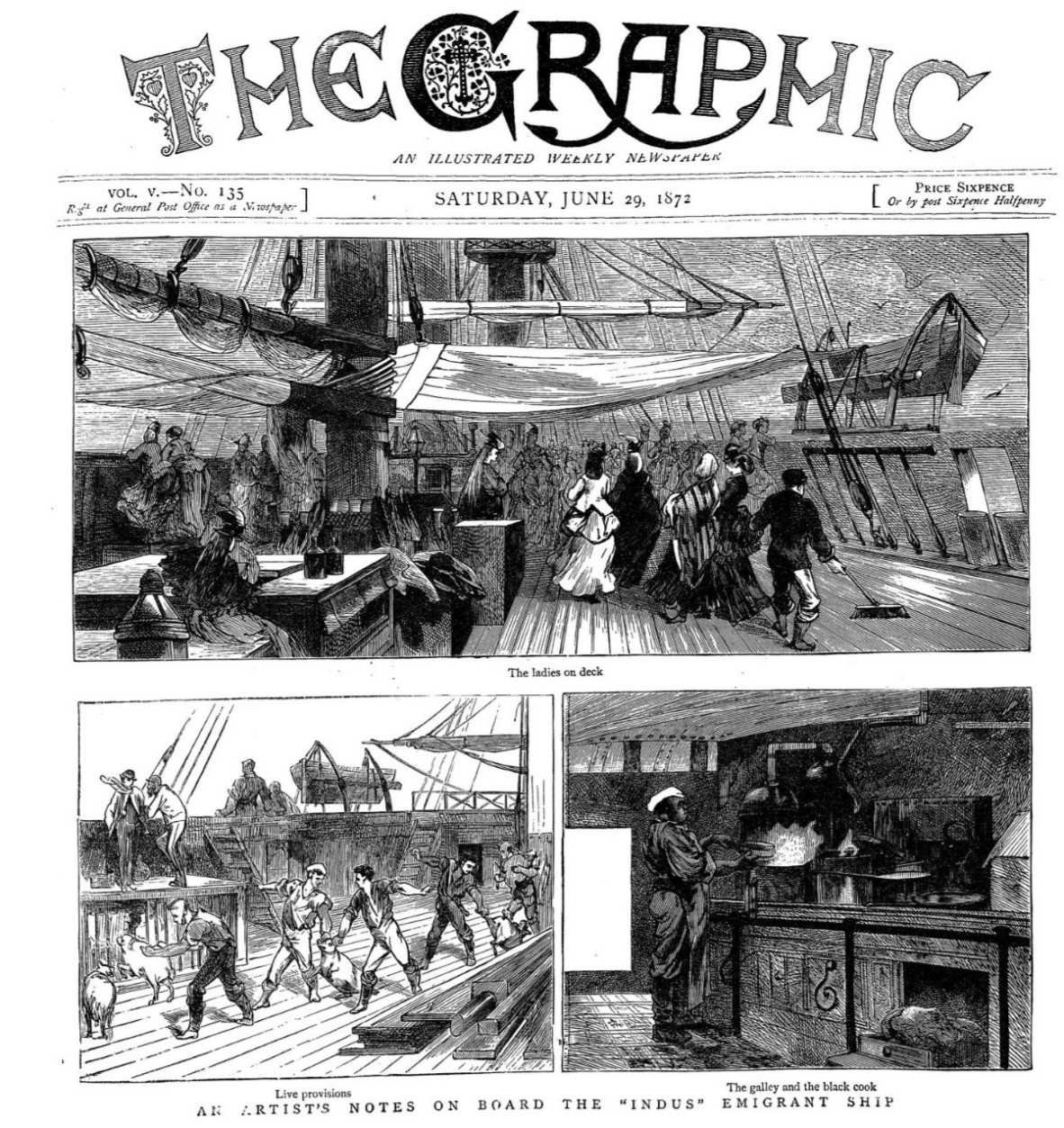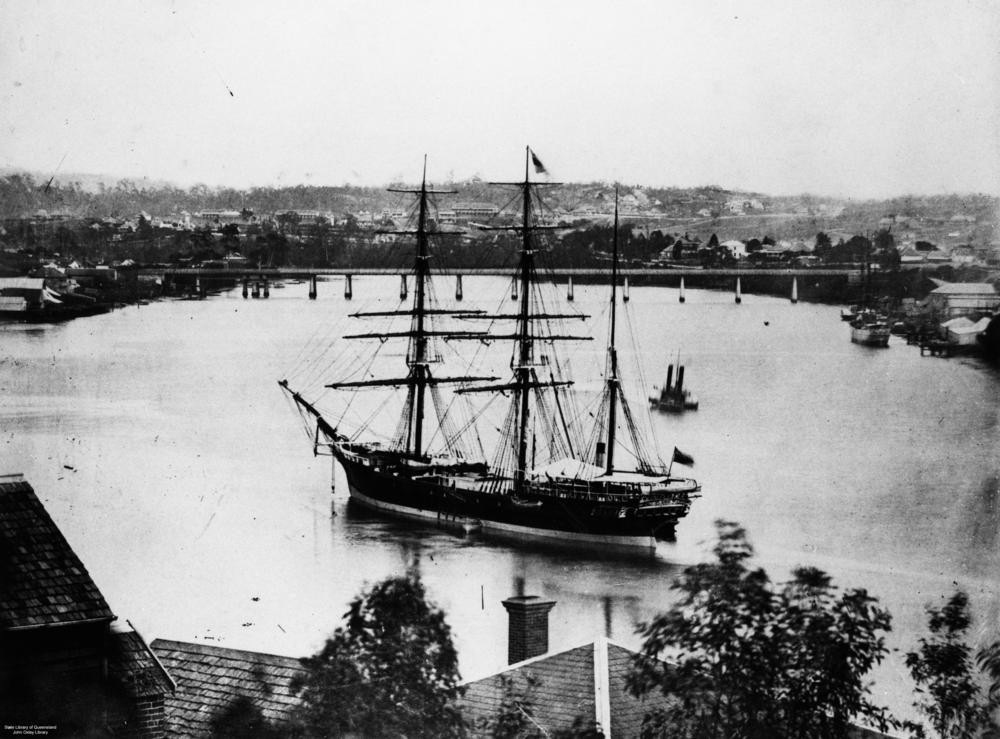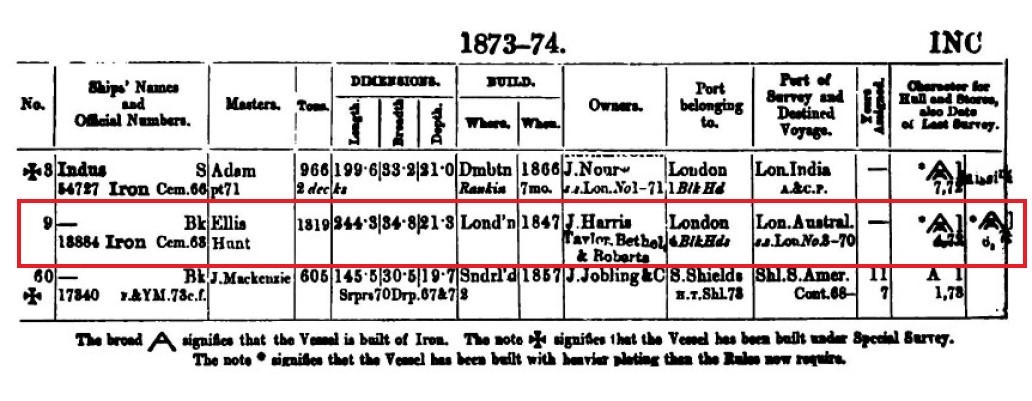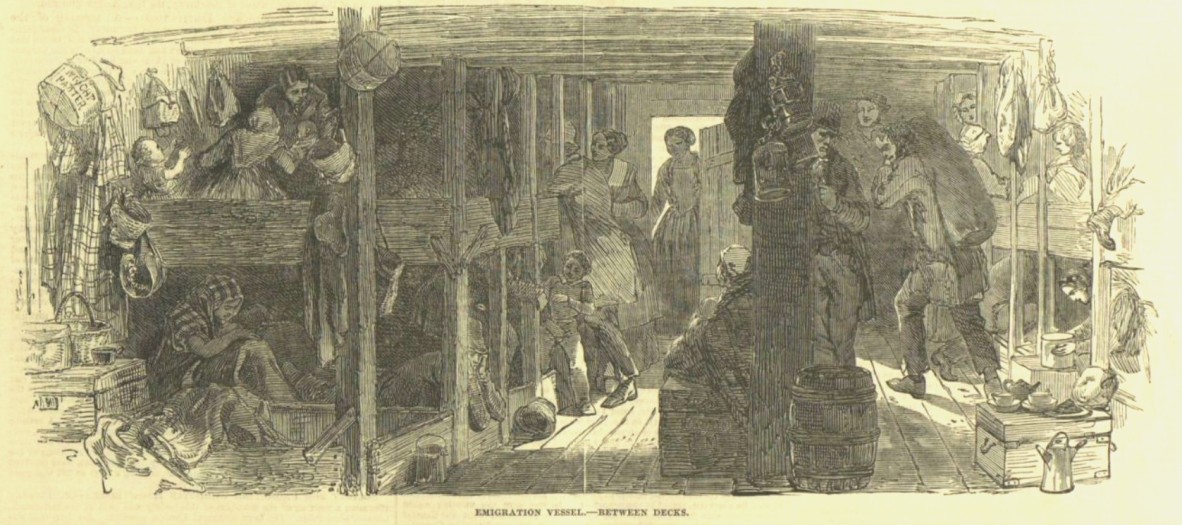Write your family’s migration story: find out about your ancestor’s ship and voyage (Part 2)
By Stephanie Ryan, Research Librarian, Library and Client Services | 12 August 2022
What was an immigrant ship like? How did immigrants spend their time?
Layout of an immigrant ship

Illustrated London News 10 July 1852, p.520
The "Bourneuf" was typical of many immigrant ships of the time.
The Illustrated London News and Graphic, available via One Search, sent artists on board to sketch and describe the scenes. Assisted immigrants were in the middle of the ship as can be seen in the diagram above, in the dark, congested ‘between decks’ as seen in the image below. They were segregated into married, single male and single female groups.
The Indus
In June 1872 the Graphic featured the "Indus" departing for Queensland.

"AN ARTIST'S NOTES ON BOARD THE 'INDUS' EMIGRANT SHIP." Graphic, 29 June 1872. British Library Newspapers, link.gale.com/apps/doc/BA3201416970/BNCN?u=slq&sid=bookmarkBNCN&xid=0f5937d2
The first class passengers had fresh food which meant bringing live animals such as pigs and chickens onboard. The food on the long trip was a hot discussion topic. The cooks might be of African origin, a new experience for people who had had limited opportunities to meet people of other cultures.
The journey
We can find out about the immigrant trip from letters, diaries, documents, illustrations and newspaper reports. Many are online. Check State Library’s catalogue One Search with the name of the vessel and the word ship. In relation to the Indus you will find many photographs (not all the same ship), the Diary of John P. Ricou on the voyage of the barque Indus from London to Brisbane, 6 April 1872 - 3 July 1872; The voyages to Queensland of the Indus, compiled by Pennie Manderson; and The Indus : London to Maryborough : arrived 1876, compiled and edited by Kay F Gassan. Search Trove historical newspapers for further details of the individual voyages. Immigrants followed the journey on maps, wrote ship newspapers, recorded the new birds and sea creatures they saw, outlined the routines of daily life and the drama of high seas, described the food available to them, the sadness of leaving home and the relief at arriving at their destination.
The correct ship
Finding the details of an immigrant ship and the correct image of it is not always easy. It’s better if the vessel is shown in the place of departure or arrival and even better if there is a contemporary account of the ship reaching its destination such as the one below which complements the picture.

View across Brisbane River to South Brisbane, with the 'Indus' (ship) in the foreground, ca. 1874
The 'Indus' made 8 passages to Queensland 1870-1884.
The 'Indus' arrival in Brisbane 6 October 1873
The capabilities of the port of Brisbane have never been shown to greater advantage than this afternoon, when the Indus, barque, of 1,400 tons, with a large cargo and 475 passengers, was brought up from the bay and safely anchored off Messrs. J. & G. Harris' wharf. The vessel was towed up by the Government steamer Kate and the Francis Cadell, under the charge of Pilot Don. She entered the river at 11.20 a.m. and arrived at 2 p.m. The immigrants seemed in great glee at the pleasant termination of their voyage, and loud cheers were exchanged between the ship and the shore during their passage up the river. They seem a healthy comfortable class of people and are loud in their praise of the manner in which they have been treated during the voyage by the officials in charge— the captain, officers, and crew. They were conveyed from the ship to the depot by the Kate s., and of course, will to-morrow be available for engagement.
Some sources for finding an immigrant ship have already been mentioned (see part 1) but there are a few problems:
- There were often a number of ships with the same name at the same time - for example Great Victoria, Boyne, Indus
- Ships changed names - for example most of the Blackball Line after James Baines bought ships from the Americans so the Comet became the Fiery Star
- Names of ships were incorrectly recorded by immigrant families, often in ways reflective of their familiar language. Some Germans remembered the La Rochelle as the Laurie Schell, Laura Schell, Lallashelly etc. English migrants recalled the Nourmahal as the Norman Hall. An Italian family named the Lusitania incorrectly as the Luisa Tania.
- Variant spelling for the same vessel complicated finding it - example: Mt Stewart Elphinstone, Mountstuart Elphinstone
"Lloyd’s register of shipping" for a specific year can help to identify the right ship

Lloyd’s register of shipping 1873-1874
Note that there are 3 different ships in the same year named Indus. There were also ships called the River Indus.
"Lloyd’s Register" at the Internet archive can be helpful by providing information about the spelling of the ship’s name, the master’s name, tonnage, where and when built, the owner, the base port, destination and other features of the ship, the symbols of which are explained in detail at the beginning of the year’s register.
Not all details will always exactly align. The Brisbane Courier reported on 8 October 1873 p2 the arrival of the ‘Indus, barque, 1400 tons, Captain Hunt, from London.’ The tonnage, barque construction, master and destination pick out the correct ship. Further details can be checked if required.
It was an extraordinary passage into the unknown for immigrants to take on a move to the other side of the world, especially in the 19th and early 20th centuries. Explore what it was like for your family at a time when it has never been easier and the primary source material so available.
Find out more…
- Read about the journey from the immigrant ship to landing in Brisbane The Kate and her companions who brought immigrants into Brisbane
- Find out about the 19th Century immigrant’s ship-kit
- Visit State Library’s display for family history month on level 3
- When you need help Ask Us
More information
Family History Month - /familyhistorymonth
Family history - /research-collections/family-history
Ask Us service - /plan-my-visit/services/ask-us
Library membership - /get-involved/become-member
Comments
Your email address will not be published.
We welcome relevant, respectful comments.
